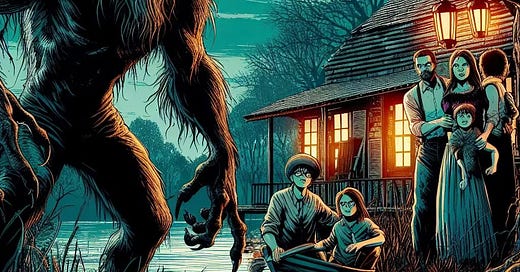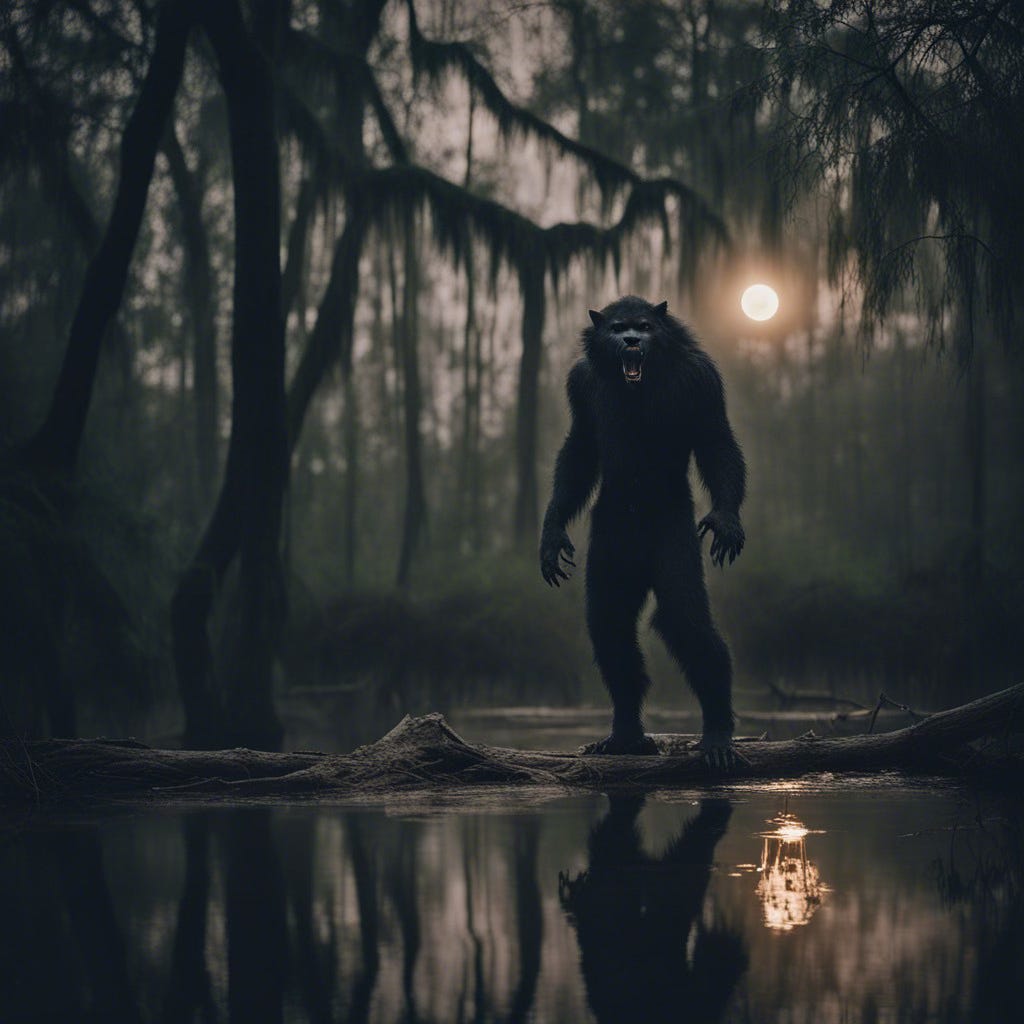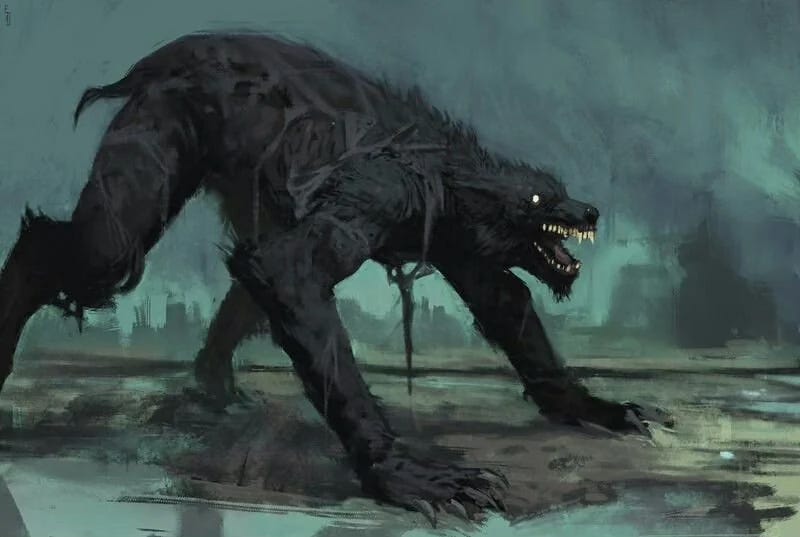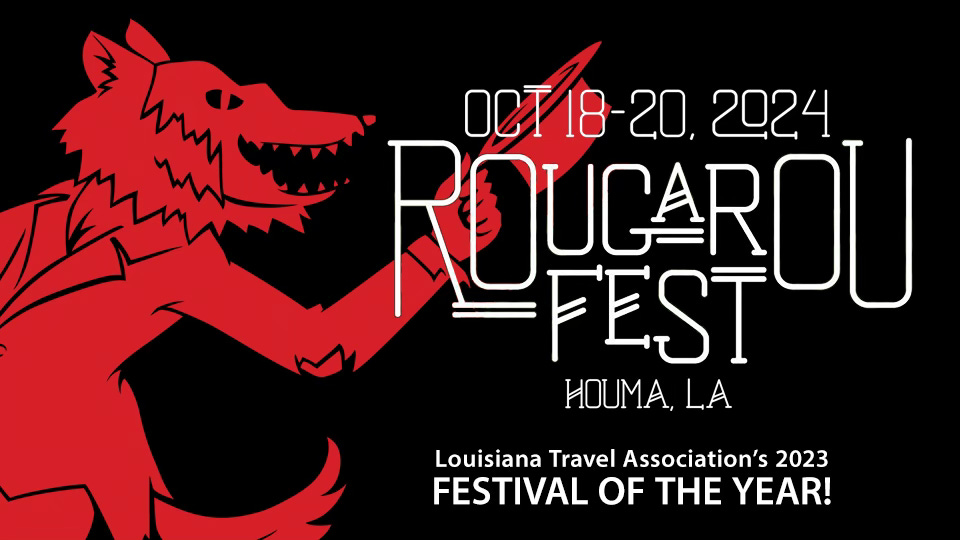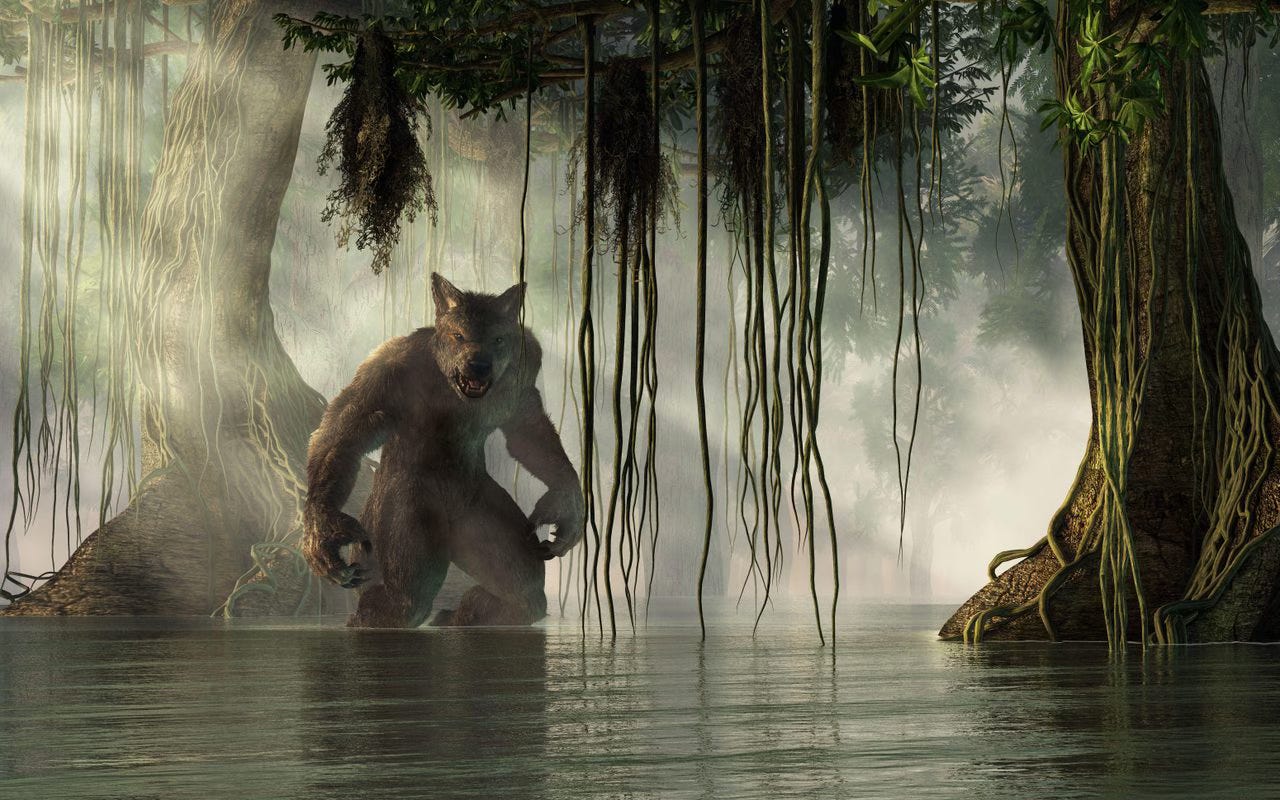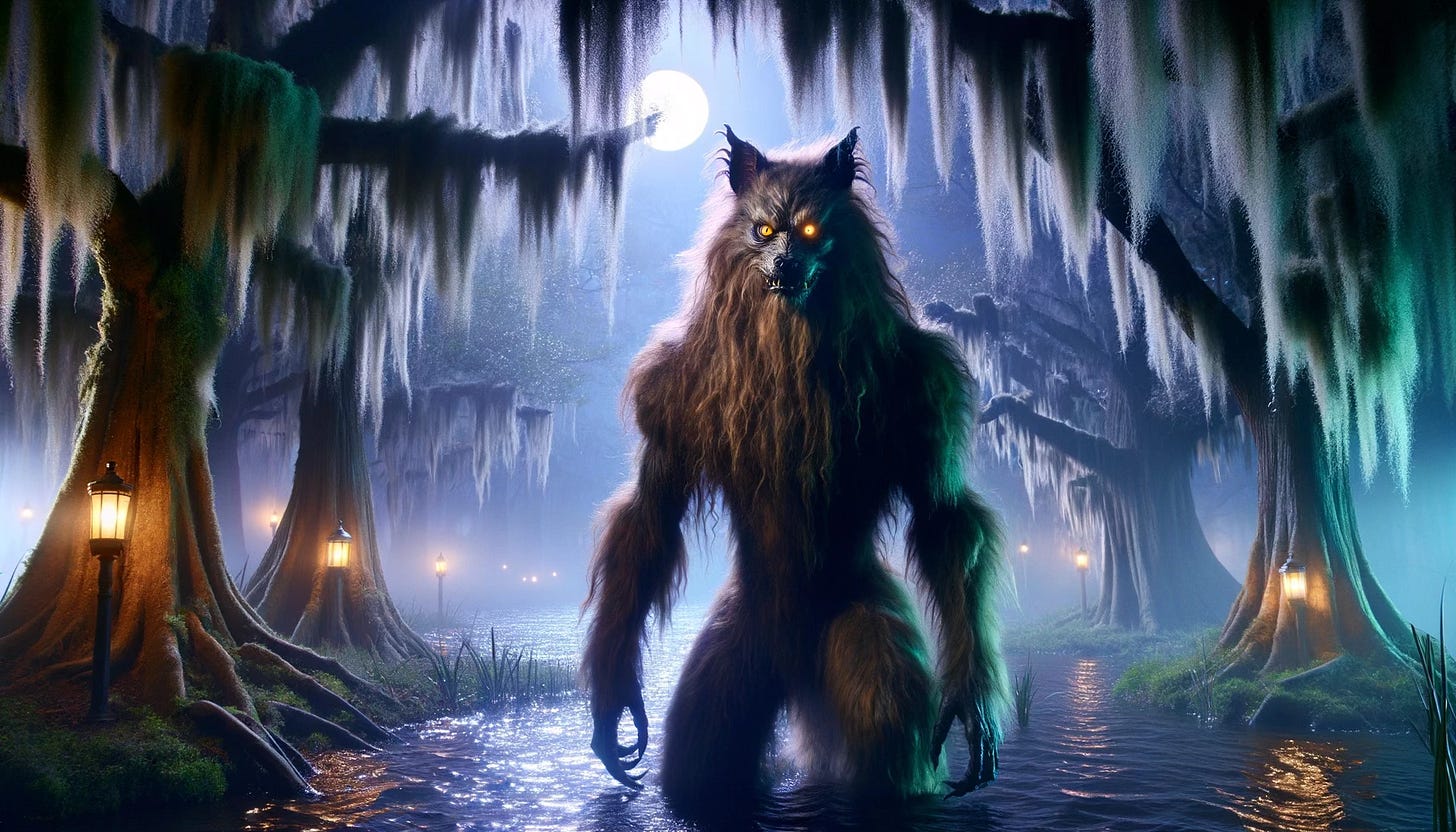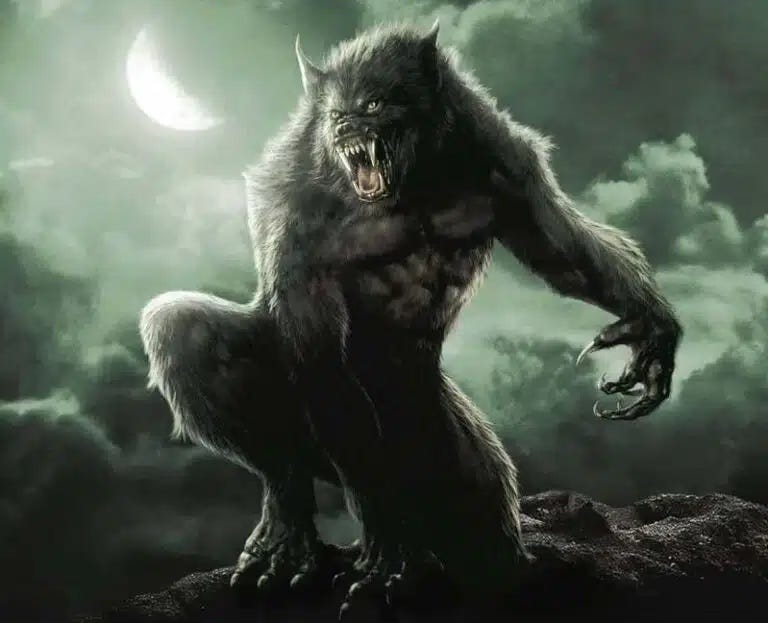The Legend of Rougarou: Louisiana’s Werewolf-like Creature
In the shadowy, moss-draped bayous of Louisiana, where the murky waters reflect the ancient cypress trees, a legend as old as time whispers through the swamps. Known as the Rougarou, this fearsome werewolf-like creature has haunted the imaginations of Cajun and Creole communities for centuries. With a body that is part man, part wolf, and a soul cursed to wander the night, the Rougarou is a tale of mystery, fear, and folklore deeply rooted in Louisiana’s culture.
But how did this terrifying legend come to be? Is the Rougarou simply a cautionary tale, or is there more to the myth? In this post, we dive deep into the origins, stories, and sightings of Louisiana’s Rougarou, exploring how this werewolf-like creature has managed to endure across generations, leaving behind a legacy of fear and fascination. Along the way, we’ll connect you with the places where the Rougarou legend still thrives, offering a glimpse into the darker side of Louisiana’s folkloric traditions.
What is the Rougarou? A Shape-shifting Beast of the Swamp
The Rougarou is a creature unlike any other in Louisiana’s folklore, often described as a man cursed to transform into a werewolf or wolf-like beast. Standing upright like a human but covered in dark, shaggy fur, with glowing eyes and sharp fangs, the Rougarou is said to roam the bayous and swamps at night, preying on those unlucky enough to cross its path.
While similar to traditional European werewolf legends, the Rougarou has distinct traits that set it apart. According to some stories, the creature can take human form during the day but transforms into the beast under the light of the full moon. In other variations, the Rougarou remains trapped in its monstrous form until someone else is cursed, passing the lycanthropic curse to a new victim after 101 days. This unique blend of myth and Cajun culture has helped the Rougarou evolve into a symbol of fear and mystery, captivating both believers and skeptics alike.
One key detail that adds to the mystique of the Rougarou is its alleged ability to target those who break religious or social taboos. The creature has been said to hunt down individuals who don’t adhere to Catholic Lent traditions, reinforcing a moral dimension to the legend. This alignment of folklore with religion has given the Rougarou an added layer of cultural significance in Louisiana’s deeply religious communities.
The Origins of the Rougarou: French Folklore Meets Cajun Mythology
The legend of the Rougarou dates back to the French settlers who arrived in Louisiana during the 18th century. The term “loup-garou,” meaning werewolf in French, was commonly used in European folklore to describe people who could transform into wolves, usually as punishment for sinful or immoral behavior. As these settlers made their way to Louisiana, the tale of the loup-garou merged with local superstitions, transforming into the Cajun version we know today.
Life in the swamps of Acadiana was tough and isolated, which only helped to fuel the spread of the Rougarou myth. With its desolate and mysterious landscapes, the swamp became the perfect setting for a creature of legend. Stories of the Rougarou quickly spread through local communities, passed down from generation to generation as a way to explain the unknown and enforce moral behavior.
In particular, the Catholic Church in Louisiana helped perpetuate the myth, using it as a warning to those who strayed from religious practices. According to some versions of the story, anyone who broke the rules of Lent—such as eating meat on Fridays—could become cursed and transform into the Rougarou. This religious twist not only added credibility to the legend but also made it an effective tool for reinforcing social and moral norms.
The Rougarou and Catholicism: A Moral Tale with a Twist
At the heart of the Rougarou legend lies a fascinating intersection between folklore and religion. For centuries, the Catholic Church in Louisiana used the Rougarou story as a cautionary tale to keep parishioners in line. According to this version of the legend, those who break the rules of Lent or fail to follow the Church's teachings are at risk of being cursed and transforming into the Rougarou.
This connection between the Rougarou and Catholicism is especially significant in Cajun communities, where religion plays a central role in daily life. Parents would tell their children stories of the Rougarou to ensure they behaved, attended church, and observed religious traditions. For adults, the Rougarou became a reminder of the consequences of straying from faith and morality.
What makes the Rougarou unique, however, is its place as both a literal and figurative monster. Unlike typical werewolves, who transform due to supernatural forces, the Rougarou's curse is tied to moral and spiritual failings. This blend of folklore and religion has helped the Rougarou endure, evolving from a mere myth to a symbol of cultural identity in Louisiana.
Rougarou Sightings: Louisiana’s Swamps as a Perfect Setting
If there’s anywhere the Rougarou would feel at home, it’s in the swamps and bayous of Southern Louisiana. These untamed, eerie landscapes have long been fertile ground for ghost stories, legends, and creatures of myth. The Atchafalaya Basin, with its dense marshes and winding waterways, is often considered a hotspot for Rougarou sightings. Locals living in Lafourche Parish and Terrebonne Parish also share tales of strange encounters with creatures lurking in the swampy shadows.
The isolation of the bayou, combined with the fog that rolls in over the waters and the endless stretches of dense trees, makes it easy to imagine a creature like the Rougarou hiding just out of sight. For many Cajuns, the swamps are a place of both beauty and danger—where the natural world meets the supernatural. The mysterious sounds of the swamp at night only add to the Rougarou’s legend, with its infamous growls and howls often attributed to the creature by those who’ve sworn they’ve seen or heard it.
Relevant Links:
Explore Louisiana's Swamps
The Modern Rougarou: From Folklore to Pop Culture
The Rougarou’s journey from swamp legend to modern-day pop culture icon has been fascinating. Today, the Rougarou is a celebrated figure in Louisiana, taking center stage at events like Rougarou Fest in Houma. This annual festival brings the legend to life with parades, costumes, and a mix of Cajun food, music, and storytelling. It’s become a way for locals to celebrate their cultural heritage while also having fun with one of their most enduring legends.
Beyond Louisiana, the Rougarou has made appearances in movies, television, and even video games. Shows like “True Blood” and “Supernatural” have referenced the creature, introducing it to a global audience. In literature, the Rougarou has also found a place in horror fiction, symbolizing the dark and untamed nature of the Louisiana landscape.
The Rougarou even has a rollercoaster named after it at Cedar Point Amusement Park in Ohio. While this may seem like a far cry from its Cajun roots, it speaks to the universal appeal of werewolf legends and the intrigue surrounding Louisiana’s unique take on the werewolf mythos.
Relevant Links:
Protecting Yourself from the Rougarou: Cajun Remedies and Superstitions
For those who believe in the Rougarou, there are a few traditional ways to protect yourself from falling victim to the creature’s curse. One of the most well-known methods involves placing 13 small objects—such as coins, rocks, or shells—outside your door. The Rougarou, cursed with the inability to count past 12, will become confused and spend the night trying to count the objects before leaving at dawn.
Other Cajun remedies include using salt or iron, both of which are thought to ward off supernatural creatures. Some also believe that the Rougarou can be stopped if you draw protective symbols around your home or carry a blessed object like a crucifix. Whether or not these methods work is up for debate, but they certainly add to the folklore’s mystique.
Is the Rougarou Real? Believers vs. Skeptics
Despite the fantastic nature of the Rougarou legend, there are many who claim to have seen the creature. Stories of strange sightings have been passed down for generations, with locals swearing they’ve encountered the beast while hunting, fishing, or exploring the swamps at night. Reports of unexplained tracks, howls, and shadowy figures moving through the trees have been linked to the Rougarou, adding an element of intrigue to the legend.
Skeptics, however, argue that the Rougarou is merely a folk tale designed to explain the unknown and keep children in line. To them, the creature represents a blend of French werewolf mythology and the fear of the swamp’s natural dangers. Regardless of whether you believe in the Rougarou or not, there’s no denying the power of the legend and its impact on Louisiana’s culture.
Conclusion: Dive Deeper into Louisiana's Folklore
The Rougarou is more than just a legend—it’s a symbol of Louisiana’s rich folklore, blending history, religion, and culture into one spine-tingling story. Whether you view the Rougarou as a literal creature stalking the swamps or a myth that’s evolved over time, it remains an important part of Cajun and Creole heritage.
Are you fascinated by Louisiana’s unique culture and history? Subscribe to our blog to uncover more stories, legends, and traditions that make this state such a rich and captivating place to explore. If you enjoyed this post, be sure to share it with your friends and family so they, too, can delve into the mystery of the Rougarou.

